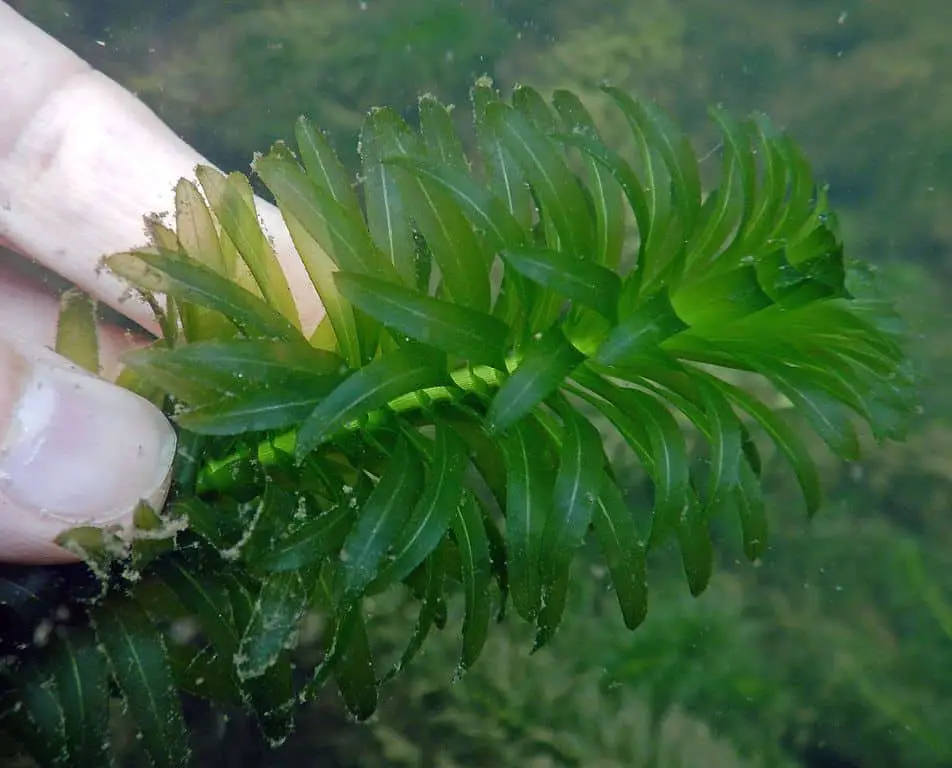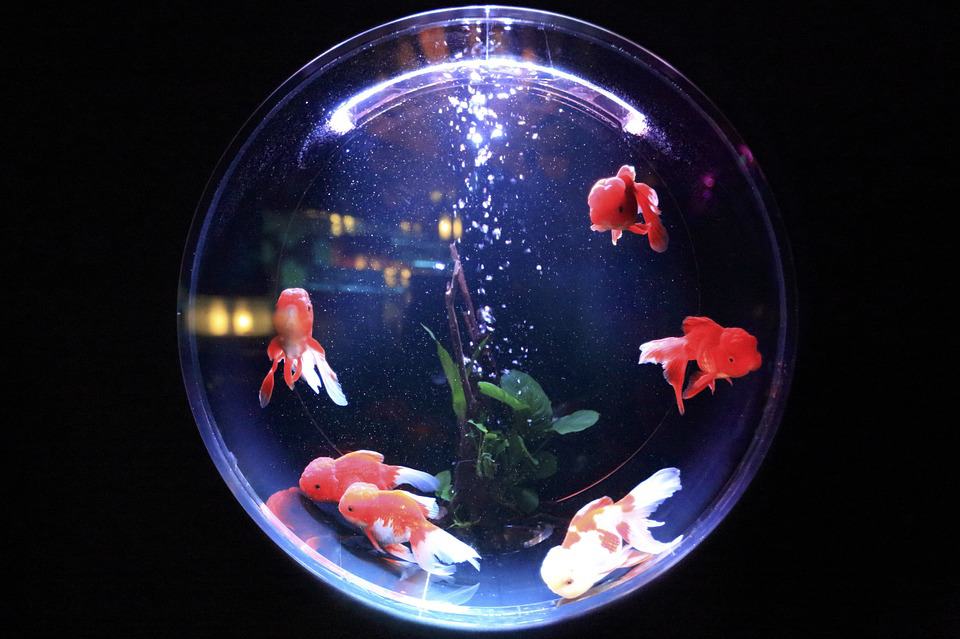Most people start fishkeeping when they’re young, starting with a small fish bowl or small tank in their bedroom. In this article, we discuss the best filters for fish bowls and small tanks.
Who hasn’t had a fish bowl?
They are often gifts from friends or family. They just think you can add water to a bowl and drop a pretty fish in there and that’s it. It will live forever without any filtration or aeration.
Well, they are wrong!
It’s unfair and cruel to keep a fish in this type of environment. It’s not the best idea to have in your bedroom; the smell alone isn’t very nice.
Simply adding a small, inexpensive filter to your fish bowl or small tank will improve the look of the tank. It will also make the environment better for the fish. PS. We have reviewed some of the best fish tanks for bedrooms, take a look at our results.
It may save you some money and prevent you from making silly mistakes by reading our blog: 30 fish keeping mistakes beginners make, it will make you smile and is a bit of fun.
In a hurry? See the best filters for fish bowls below:
Table of Contents
What filter is best for a fishbowl?
Buy a bigger tank would be our first suggestion. If this is not an option, then a good filter for fish bowls is a small, inexpensive sponge filter; this will do the trick.
Simply adding any form of filter for fish bowls will be beneficial to the fish. It will also improve the experience for the person keeping the fish. This will hopefully lead them into buying a bigger tank later down the line and enjoying this hobby which we love.
Recommended Fishbowl Filters
Are sponge filters good for a fishbowl?
Fish waste contains ammonia, which is toxic to fish. In the wild, this isn’t a real issue due to the sheer volume of flowing water. However, in a small, confined space such as a fishbowl, the ammonia will build up to a dangerous level for the fish and will eventually kill them.
That’s why it’s important to add a filter to fish bowls.
Sponge filters offer a gentle filtration method which is suitable for smaller fish bowls/tanks. They are also suitable for aquariums where small delicate fry (baby fish) are present.
With larger electric pump controlled filters, they can suck smaller fish and baby fry into the unit which will kill them. Electric pumps are normally too big to go in a fishbowl anyway. This is why a sponge filter will be the best option and sometimes the only option available to you.
They are cheap and inexpensive to run and as long as you buy a quiet air pump to run them, then they are suitable for bedrooms and quiet areas.
What are sponge filters?
Sponge filters like the one pictured, are exactly what the name implies. It is a sponge through which the aquarium water is drawn. Air passes through the middle of the sponge which causes water to be drawn in through the sponge, trapping dirt particles.
Once the sponge filter has matured, which will take 2-3 weeks, the bacteria which will have grown on the sponge, will provide good biological filtration. The bacteria will eat away at the dirt trapped within the sponge naturally. No chemicals, just pure natural filtration. Similar to the ocean where dirt is trapped in the sand and rocks, bacteria eat away at the nasty ammonia and turn them into harmless CO2.
Sponges can be purchased in all sizes and shapes. They are powered by either air pumps or powerheads. These are small pumps that sit on the top of the sponge and provide more suction which draws more water through the sponge.
Again, these are normally used in larger aquariums where you don’t want the fish to be sucked up into the filtration.
We purchase ours from one of the best online pet stores Chewy.com and use these sponge filters in our hospital tanks and smaller aquariums. Here’s a link to the ones we use.
What type of pump will I need?
The key to buying a suitable air pump is to buy the quietest pump which is suitable for the size of Fishbowl or Tank it’s intended for.
The last thing you want to do is buy a so-called quiet air pump that keeps your son or daughter up all night!
Most small air pumps will run a sponge filter in a small goldfish bowl or small fish tank.
TOP TIP: Always buy an air pump slightly bigger than it says you need. Once the sponge starts to fill up with dirt and mature, it will take more power to draw water through the clogged sponge.
Don’t be tempted to clean the filter too much. This can be very harmful to the bacteria growing on the sponge. It may look dirty but that’s fine, that’s what its supposed to be like.
We will talk about cleaning the sponge soon.
A three watt one outlet air pump will be fine. The Tetra Whisper pump is perfect and great value.
What else do you need in a fishbowl?
Adding Oxygenating plants to your fishbowl is also a good idea.
Plants go through photosynthesis, which converts CO2 into oxygen. So, the more plants you have in the water, the more oxygen is created.
Even though you are limited with space in a fishbowl, we would still recommend the use of a filter and air pump. Plants, however, look nice and add a bit of natural substance for the fish to eat and play with.

Don’t rely on plants alone to oxygenate the bowl or tank. Water movement is very important in aerating the water and plants won’t do this.
A good plant to buy which is readily available in most pet stores and aquarium shops is Egeria Densa. This produces plenty of CO2 in small tanks. It’s very inexpensive and readily available in more pet stores/aquarium shops.
How to clean your sponge filter
This really is a very simple task to achieve and is one of the best advantages of using sponge filters.
- Take a jug of water from the bowl or tank.
- Remove the sponge from the bowl
- Place the sponge in the jug of water from the tank and shake and squeeze the dirt out
- Remove as much of the dirt as possible.
- Replace the sponge back inside the bowl
Do not be tempted to rinse the sponge in clean water, this will kill the good bacteria that are cleaning your water.
Repeat this process every 2-3 weeks and never replace the sponge for a new one. It might look dirty but it’s doing a good job.
When you feel it’s time to replace the sponge you will need to add the new one a week or two before throwing the old one away. So for a week, you will have two sponges running in the bowl.
Split the air pump by using an air tube divider to power both sponges for one week. Then go back to a single sponge once you’re happy that the new one has enough good bacteria to keep your fish safe and clean. For some of the quietest air pumps on the market read our complete review of the Quietest aquarium air pumps.
Final Thought: Filters For Fish Bowls
Try to remember what we said right back at the start of this article. If possible buy a bigger tank!
It’s not nice to keep pets in small, confined spaces and before anyone says ‘it’s only a goldfish and they don’t have feelings or emotions’, ask yourself when you go near the bowl or tank, why do your fish come to meet you and swim to the top?
Why do you think they do that?
Because they remember who and how they get food from. So if they remember that, is it possible they have feelings?
Just a thought, that’s another topic for a different day.
Fish tanks have moved on over the past few years. Technology has improved and made it easier for us all to keep fish in a clean and healthy environment. Most tanks now, even smaller ones for your bedroom, have built-in lights, filters, and heaters. The one below would be perfect for a bedroom and would make a great first fish tank.
Much nicer than a goldfish bowl I’m sure you’ll agree.
Good luck and we hope you install a filter in your fishbowl, no matter what type you choose.
- Comparing Aquarium Gravel To Sand – Which Is Best For Your Tank?
- Marineland Magniflow 360 Canister Filter 360 GPH | Pros and Cons
- Best Aquascaping Tools Every Aquarist Should Use
- Best Aquarium Plant Substrate Review 2022
- Polar Aurora Canister Filter | 2022 Updated Review 525 GPH

I have been working in the tropical fish industry for over 30 years now and I’m still learning. Everyday is a school day in this hobby. In my spare time I play golf very badly!







